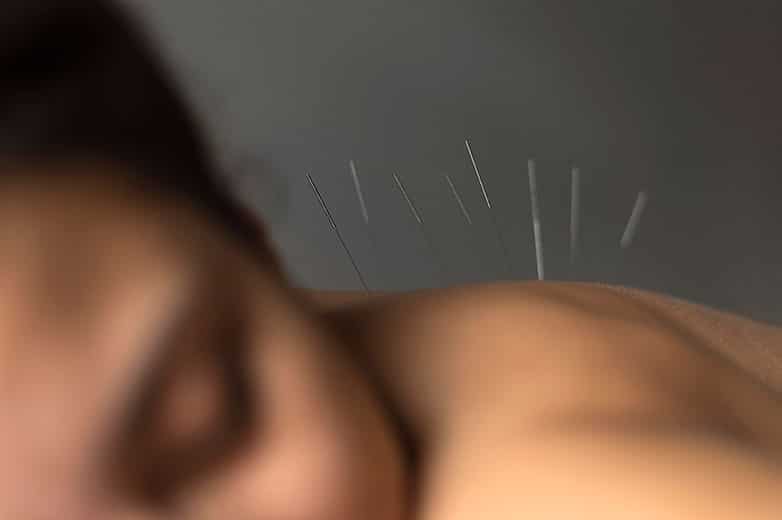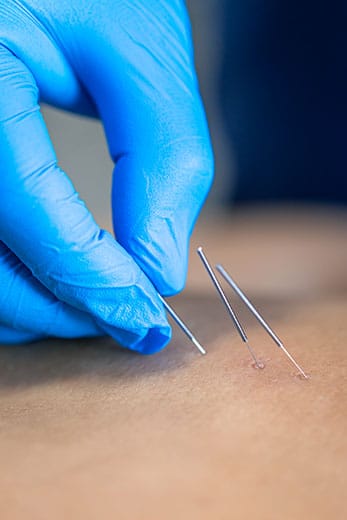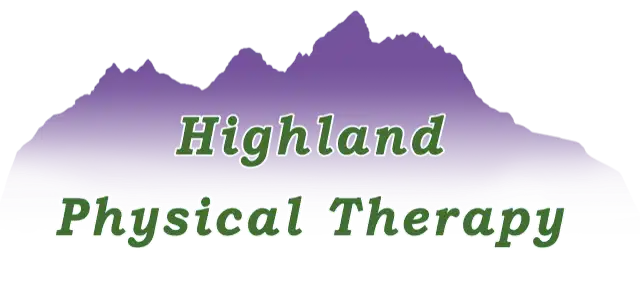Dry Needling
Dry needling, offered by Kimberly and her team at Highland Physical Therapy, is a highly effective technique used to address muscle pain, stiffness, and dysfunction.
What is Dry Needling?
Unlike acupuncture, which is rooted in traditional Eastern medicine, dry needling is based on modern Western medical principles and scientific research. By inserting thin needles into specific trigger points within the muscles, dry needling stimulates the nervous system and promotes improved communication between nerves and muscles.
One of the primary benefits of dry needling is its ability to reduce pain by targeting trigger points, which are hyper irritable spots within the muscle tissue. These trigger points often contribute to muscle tension and pain, limiting range of motion and overall function. Through the precise insertion of needles into these trigger points, Kimberly and her team can effectively release muscle tension and alleviate pain, allowing patients to move more freely and comfortably.
Request A Call Back from a Physical Therapist
If you’re not quite ready to book an appointment yet and have some questions you would like answered first, click the link below to complete a form to get the conversation started.


How Can Dry Needling Help And Benefit You?
Additionally, dry needling enhances blood flow to areas of the body that may have suboptimal circulation. This increased blood flow delivers oxygen and nutrients to the tissues, promoting healing and tissue repair. By optimizing blood flow, dry needling can accelerate the rehabilitation process and improve overall function and mobility.
While dry needling and acupuncture both involve the use of thin needles, they differ in their underlying principles and approaches. Dry needling focuses on addressing musculoskeletal issues and trigger points, whereas acupuncture is based on the concept of balancing energy flow within the body’s meridians. At Highland Physical Therapy, Kimberly and her team stay ahead of the latest research and advancements in dry needling techniques, to ensure that patients receive the most effective and evidence-based care available.
Dry needling sessions at Highland Physical Therapy are catered to each individual’s specific needs and goals. During an initial assessment, Kimberly and her team conduct a thorough evaluation to identify areas of muscle tension, dysfunction, and pain. Based on this assessment, a personalized treatment plan is developed, incorporating dry needling as a targeted intervention to address the underlying issues contributing to the patient’s symptoms.
Throughout the dry needling session, Kimberly and her team prioritize patient comfort and safety, ensuring that the procedure is performed with precision and expertise. The insertion of thin needles into trigger points may elicit a sensation known as a “twitch response,” which indicates the release of tension within the muscle. Patients experience immediate relief from pain and improved range of motion following the session.
As part of a comprehensive rehabilitation program, dry needling can complement other therapeutic modalities such as manual therapy, exercise therapy, and patient education. By integrating dry needling into your treatment plan, Kimberly and her team optimize the chances of success and facilitate a faster and more complete recovery for their patients.
Need To Know More About Cost and Availability?
If you’d like to find out more information about the cost and availability of our services click the button below to complete a short form, a member our team will then reach out.
Hear From Happy Clients Of Ours
Please take a moment to enjoy hearing of other people, who like you, came in to see the team at Highland Physical Therapy – and left much happier
